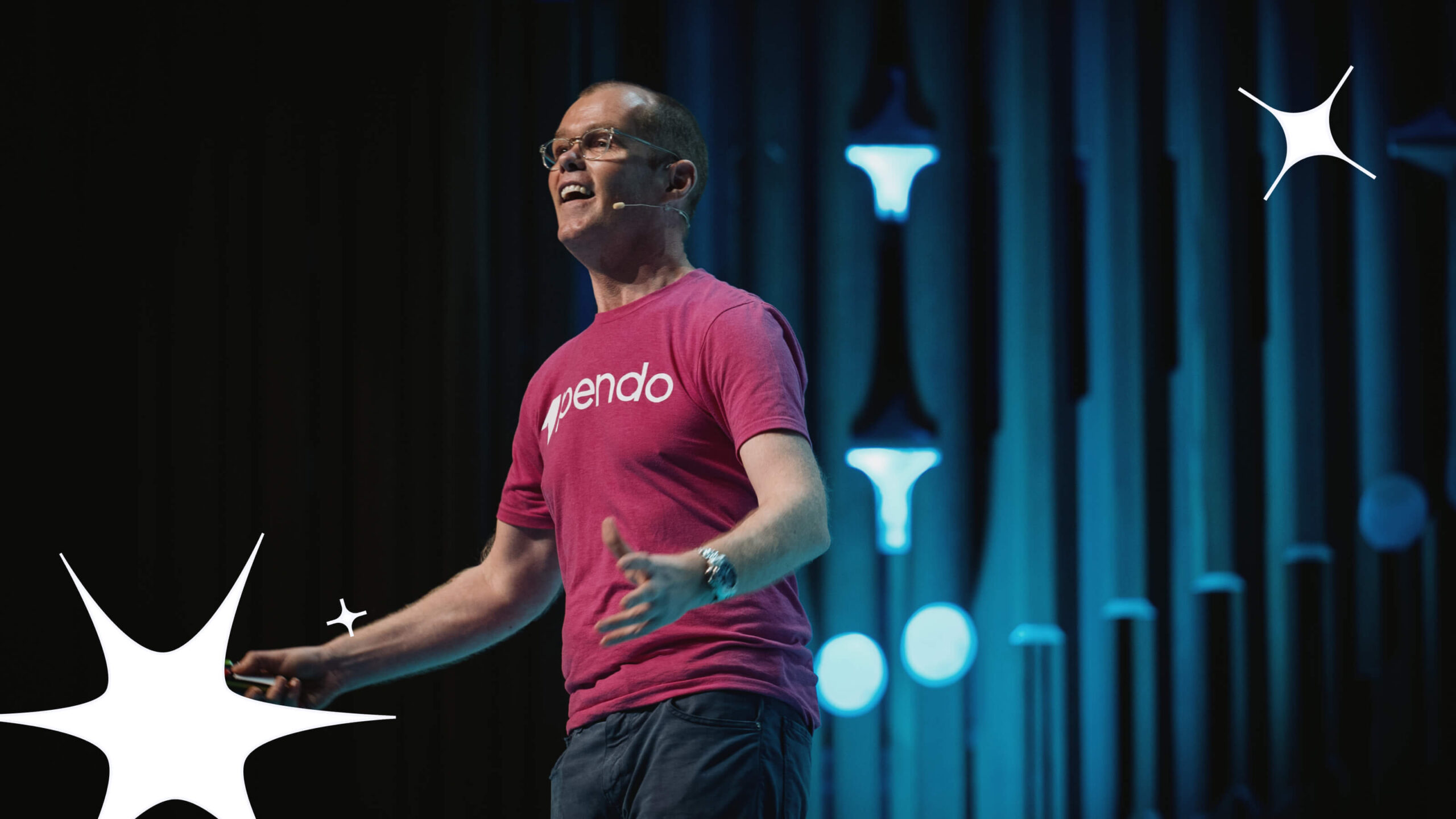“It’s crun-chew-easy!” Remember that famous Taco Bell commercial pushing its all-time best seller, the Cheesy Gordita Crunch?
That same Taco Bell is betting big that they can start selling a whole lot more of those by applying a powerful business approach that’s more often tied to hyper growth SaaS companies than fast-food restaurants: being product led.
Here’s how they’re doing it: In January, Taco Bell started offering a subscription plan called the Taco Lover’s Pass. This membership lets subscribers show up at any Taco Bell and get one taco from a select list of menu items per day for $10 per month.
Since launching, Taco Bell reports that people who take advantage of the pass now visit their restaurants three times per month more than before, participation in its rewards program has risen by 20%, and engagement with the chain’s app has risen by 100,000 daily average users. But it’s not just the traffic bumps or the rewards enrollment that Taco Bell was after: Over half of passholders also purchase additional food each time they visit for their daily taco.
This strategy checks off each of the main benefits of product-led strategies:
-
- They drive adoption by leading with their product (the daily taco)
- They drive growth by upselling the extra tacos at point-of-sale (let’s be real here: everyone knows you can’t have just one taco)
- They increase retention by keeping patrons coming back for more (the subscription plan)
Remember, you heard it here first: We’re going to call this classic, if unexpected, use of a product-led strategy “taco-led growth.”
Taco Bell has also done a great job of building community engagement with its recent user-generated content campaign around the return of its popular Nacho Fries item. Even something as simple as a daily word puzzle, like the New York Time’s wildly popular Wordle, uses product-led community engagement as a growth mechanism. Wordle lets users easily share their results on social media, without giving away the answer, in a single click. That spreads the word and piques others’ curiosity, driving new usage.
Other non-SaaS companies have also started to take note of the effectiveness of these strategies, too. Many airlines, like Southwest and Alaska, have recently launched their own subscription programs. These have the same goal of Taco Bell’s offering: Lead with the product—deals of flights—to build a sense of investment and loyalty in customers, driving up growth and retention.
Here are a few more examples of product-led strategies being used by companies outside the world of SaaS that may surprise you.
Free trials and Freemium
Speaking of the New York Times, their paywalling strategy is a great example of another tried-and-true product-led strategy: Freemium access and free trials.
The Times’ approach is a bit of a hybrid between the two. It provides readers with free access to a set number of articles per month, after which point they’re asked to move to a paid subscription. Since launching their digital offering in 2011, the organization has lowered the limit from 20 to 10 and then five articles per month.
This strategy provides users with a sufficient amount of free content to let them judge the quality of the outlet’s reporting and decide if they want to upgrade to unlimited access. Its product led to a tee: they’re opening with their product, there’s a clear limit that provides an incentive to upgrade, and subscribing happens in-product, with no need to speak with a salesperson. This approach has helped the Times grow its subscriber base at a pace exceeding their own expectations, years ahead of schedule.
Ecommerce companies have also widely adopted similar try-it-before-you-buy-it strategies. StitchFix is famous for embracing this model to sell clothing, Warby Parker does it for eyewear, and Casper for mattresses. Each of these organizations offers their product through some iteration of this model:
-
- Order the product
- Have it delivered to your door
- Try it out for a bit
- Return what you don’t like, and pay for what you want to keep
StitchFix goes a step further, personalizing the experience down to your preferred style and setting you up with a stylist who curates your order.
Another version of this strategy can be found in gaming. Many studios are releasing massive multiplayer online games that are initially free to play, but require players to purchase optional in-game upgrades to enrich their gaming experience. Often, these purchases occur in-app, while users are actively playing the game. There’s also a powerful network effect in keeping up with your in-game peers that drives players to spend on digital merchandise. Epic Games’ Fortnite is a prime example of this strategy in action.
Product-led onboarding and training
Meta’s Oculus Quest virtual reality headset is a consumer product that embraces product led in a few ways, and that’s caused it to become the top-selling VR/AR system on the market.
The moment an Oculus owner dons the headset and picks up the controllers, they’re met with an in-app onboarding experience that takes them through the basics of using the controllers and interacting with their new virtual world. At no point does the player need to contact the company or read an instruction manual to get started.
Meta also sells the software that runs on the Oculus in a virtual store, right inside the headset environment. There’s no need to run to a store to pick up the latest game—just point, click, and download it right from the interface. They even let you know when the latest and greatest game or app has been released with in-app notifications. This is an approach taken by other traditional gaming companies like Nintendo, Microsoft, and Sony.
Even large retailers, whether they’re traditional companies like Walmart and Home Depot or digitally-native companies like Amazon, are embracing product-led strategies to empower their employees to be more productive and ease their experiences with the software.
Walmart recently began rolling out an internal smartphone app for its employees that lets them clock-in to work digitally, helps them locate merchandise, and assists them when answering customer questions.
And, they’ve invested heavily in creating a convenient and reliable remote shopping and on-site pickup experience. It’s all powered by a combination of their consumer-facing app—basically, their store in your pocket—and that aforementioned employee-facing app, which guides employees through optimized workflows for packing and delivering orders in the most efficient way possible. That’s right: in this case, they’re literally being led by the product.
Data-driven growth
Another hallmark of a product-led organization is its ability to leverage behavioral data to create better user experiences and drive growth. Many non-SaaS companies are doing this by integrating an app into their operations that allows users to make purchases or interact with the company in other ways. Those interactions are then used to inform sales strategies or growth initiatives.
Going back to fast-food, Burger King is pairing customer purchase data, location, and other data with machine learning and AI to power its app’s recommendation engine. The data is fed into the model, then users are placed into segments that show them different recommendations based on the data. Coffee giant Dunkin is also experimenting with similar technologies to analyze customer in-app behavior and purchasing patterns to send personalized promotions to individual patrons.
In the banking space, Morgan Stanley is using product analytics to empower their teams to have more data-driven and informed conversations with customers, and they’re using in-app guidance to deliver timely and contextual support to users of their digital offerings.
Product-led strategies also helped catapult Tesla from a niche automaker to an electric vehicle juggernaut that competes with some of the auto industry’s biggest names. Tesla meticulously tracks usage data from their vehicles and uses that information to guide their product and feature planning process. And, rather than forcing customers to buy a new vehicle or the latest model when they want new features, upgrading your Tesla is as easy as downloading a software update.
Product led: It’s for everyone
So there you have it. Product led may have originated in the SaaS world, but it’s just as powerful of a strategy for driving growth for any company, no matter what industry it operates in or how big it is. All that’s required is the ability to start collecting and analyzing engagement data, and a way to streamline onboarding and support in-product.
Looking for ways to start becoming product led at your organization? Check out our Product-Led Resource Hub.


